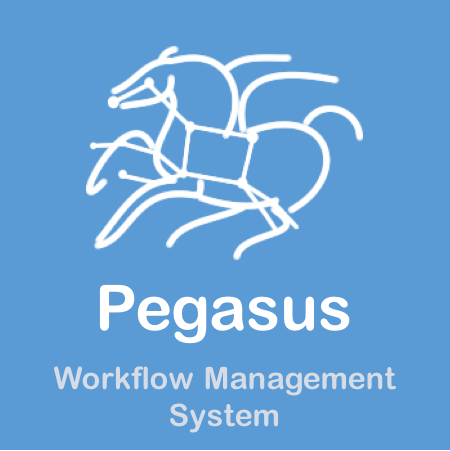The Pegasus project encompasses a set of technologies that help workflow-based applications execute in a number of different environments including desktops, campus clusters, grids, and now clouds. Scientific workflows allow users to easily express multi-step computations, for example retrieve data from a database, reformat the data, and run an analysis. Once an application is formalized as a workflow the Pegasus Workflow Management Service can map it onto available compute resources and execute the steps in appropriate order. Pegasus can easily handle workflows with several million computational tasks.
Pegasus has been used in a number of scientific domains including astronomy, bioinformatics, earthquake science , gravitational wave physics, ocean science, limnology, and others.When errors occur, Pegasus tries to recover when possible by retrying tasks, by retrying the entire workflow, by providing workflow-level checkpointing, by re-mapping portions of the workflow, by trying alternative data sources for staging data, and, when all else fails, by providing a rescue workflow containing a description of only the work that remains to be done]. It cleans up storage as the workflow is executed so that data-intensive workflows have enough space to execute on storage-constrained resources]. Pegasus keeps track of what has been done (provenance) including the locations of data used and produced, and which software was used with which parameters.
Pegasus bridges the scientific domain and the execution environment by automatically mapping high-level workflow descriptions onto distributed resources. It automatically locates the necessary input data and computational resources necessary for workflow execution. Pegasus enables scientists to construct workflows in abstract terms without worrying about the details of the underlying execution environment or the particulars of the low-level specifications required by the middleware (Condor, Globus, or Amazon EC2). Pegasus WMS also bridges the current cyberinfrastructure by effectively coordinating multiple distributed resources.
Pegasus is composed of three components:
- Mapper (Pegasus Mapper): Generates an executable workflow based on an abstract workflow provided by the user or workflow composition system. It finds the appropriate software, data, and computational resources required for workflow execution. The Mapper can also restructure the workflow to optimize performance and adds transformations for data management and provenance information generation.
- Execution Engine (DAGMan): Executes the tasks defined by the workflow in order of their dependencies. DAGMan relies on the resources (compute, storage and network) defined in the executable workflow to perform the necessary actions.
- Task manager (Condor Schedd): manages individual workflow tasks: supervises their execution on local and remote resources.
- Monitoring Component ( Pegasus Monitord ) : Monitors the running workflow , parses the workflow and job logs and populates them into a workflow database that is used to store runtime provenance information. It also sends notifications back to the users notifying them of events like failures , success and completion of workflows and jobs.
